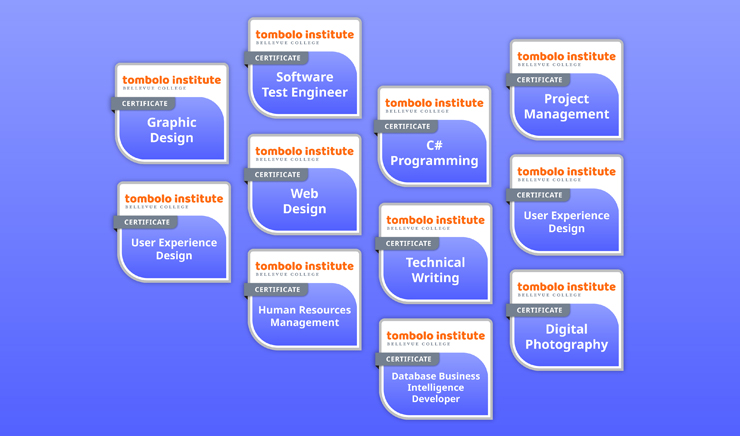Blog
The Rise of Online Learning

4/1/2020
At colleges across the United States, the rate of growth in online enrollment is outpacing that for on-campus enrollment. According to Inside Higher Ed, “The number of students taking at least one online course grew from 31.1 percent in 2016 to 33.1 percent in 2017 and 34.7 percent in 2018.” While online courses won’t be displacing traditional college classes anytime soon, the demand for online education is steadily increasing.
Who Are the Online Learners?
According to the 2019 Online Education Trends report by BestColleges, “… a majority [69% of respondents] of these career-minded students identified themselves as career accelerators interested in earning an academic credential in a field where they already work or have practical experience.” Additionally, the majority of these students have children and are employed.
What Is Driving the Popularity of Online Learning?
Online education allows students the flexibility to be able to work and pursue an education simultaneously; they no longer have to choose between a career and education. The convenience factor also motivates working professionals to pursue short-term, non-credit online classes that further develop their skills and help advance their careers. In fact, many colleges have begun to experiment with non-credit, competency-based credentials and short courses that allow learners to earn certificates or badges that demonstrate skills or experience gained. These “micro-credentials” are increasingly recognized by employers and are valuable supplements to the traditional resume. Another reason is the cost savings that result from students not having to drive to class, pay for parking, pay for on-campus meals or pay for other costs associated with in-person education.
Quality of Online Education
- Perceptions. According to the 2019 Online Education Trends Report by BestColleges, a majority of students indicated that online learning is “better than” (32%) or “equal to” (45%) on-campus learning. When asked about their employers’ perceptions of online learning, the results were similar.
- Online Collaboration. Synchronous learning, which is associated with video and livestreaming learning, requires the student to virtually attend an online class during scheduled hours. This creates a face-to-face learning environment and enables real-time responses by instructors to questions and enhances peer-to-peer collaboration. Additionally, synchronous learning offers enhanced communication that improves clarity and retention of information. Research indicates that the majority of working professionals find video learning effective and that it improves the quality of the online learning experience.
Why is online learning beneficial for employers who wish to upskill their workers?
Online learning is formal learning. It is usually intentional, which means it is based on a strategic thinking process that has learning as a goal rather than an incidental outcome; it is guided by a formally developed curriculum and is structured in terms of learning objectives, duration, content, method and assessment.
Benefits of Formal Learning:
- Large numbers of employees will learn the same information and/or processes at the same time.
- If properly designed, the course’s contents are accurate and up to date.
- Employees learning through formal training programs come up to speed faster once they start their jobs.
- Properly designed formal training programs can include a variety of methods to appeal to all learning styles and conform to adult learning principles.
- The assessment process allows employers to have greater confidence that learning objectives have actually been achieved.
- A formal curriculum prepared by subject matter experts provides management with greater confidence that important content has been covered consistently.
- There are established methodologies to assess the application and impact of formal learning.
Online Learning Meets the Need for Continuous Learning
Research by Northeastern University’s Center for the Future of Higher Education and Talent Strategy reveals that “a majority of HR leaders [64%] believe that in the future, the need for continuous lifelong learning will require higher levels of education and more credentials.” In fact, continuous learning is now a requirement for professionals who wish to keep up to date on the rapid changes in the workplace. Online learning offers busy professionals the flexibility and convenience that allows them to consistently develop and improve skill sets in order to perform more effectively and productively at their jobs.
Online Learning at Tombolo Institute
The Greater Seattle area has experienced massive growth in the business and technology sectors this millennium. Despite the growth, Seattle is still in dire need of business and tech workers. That may surprise you, but it shouldn’t after reading the January 2019 LinkedIn Seattle Workforce Report. The top skills shortages in Seattle area entering last year included business management, data science, leadership and web development. This report highlighted the need for new programs in education so that skills gap could begin closing, but it didn’t necessarily call for an increase in online programs. So why did Tombolo Institute increase their online course options by 20 percent from last fiscal year?
Let’s take a look at one of the biggest headaches of Seattle workers: Commuting. It’s no secret Seattle’s infrastructure wasn’t built for the population boom of the 2010’s, leading to commutes that can drain you before you even step into your office. Considering the work load Seattle companies expect from their employees, a rough commute can skew production for a full day.
Full-time remote workers in Seattle not only save more than $500 in gas annually, but more importantly they save 224 hours by avoiding the local commute. Even half-remote workers save more than $250 and 112 hours respectively.
Tombolo Institute is located just north of SR-520 on the border of Bellevue and Redmond. While convenient for some, it can be a challenge to get to campus if you aren’t on the Eastside, especially considering many of the in-person Tombolo courses are offered in the evening. While located ten miles away from downtown Seattle, it can be daunting to get from one to the other in that time.
Tombolo’s increase in online courses isn’t just a reflection of the industries in which we offer education, it’s reflective of the area. Our online courses allow you to be anywhere from Port Angeles to Pullman and receive top-notch education you can’t find anywhere else.
Tombolo is for everyone, from any location.
Whether you’re looking for a new career or new skill, browse our catalog today to find the online program that’s right for you. Please note that only online courses (instructor-led and/or self-paced) are available for Spring Quarter.



